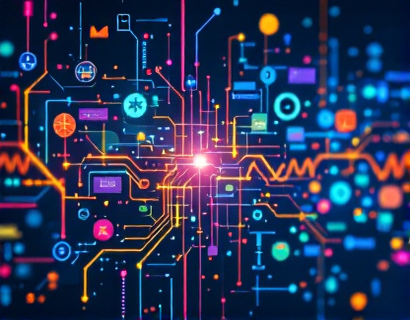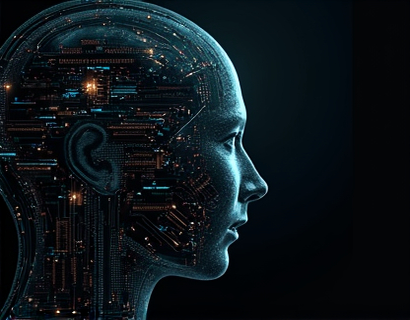Crypto and AI Synergy: Revolutionizing Digital Engagement
The intersection of cryptocurrency and artificial intelligence (AI) is giving rise to a new era of digital engagement, where advanced tech solutions are redefining user interactions and driving growth across the tech sector. This article delves into the latest innovations at the convergence of crypto and AI, exploring their profound impact on app interactions and the broader digital landscape. For tech professionals and enthusiasts, understanding these synergies is crucial for staying ahead in an increasingly sophisticated technological environment.
Evolving Landscape of Cryptocurrency and AI
The integration of cryptocurrency and AI is not a new concept, but recent advancements have accelerated their synergy. Cryptocurrencies, with their decentralized and secure nature, provide a robust foundation for AI applications that require high levels of data integrity and transaction security. Conversely, AI's ability to process and analyze vast amounts of data swiftly and accurately enhances the functionality and efficiency of blockchain-based systems.
One of the key areas where this synergy is making waves is in smart contracts. Traditional smart contracts are limited by their static nature, but with AI, these contracts can become dynamic and adaptive. AI algorithms can analyze real-time data and adjust contract terms accordingly, ensuring that agreements remain fair and relevant. This evolution not only enhances trust but also opens up new possibilities for automated and self-executing agreements in various industries.
Enhanced User Interactions through AI-Driven Crypto Apps
Crypto apps powered by AI are redefining user experiences by offering personalized and intuitive interactions. Machine learning algorithms can analyze user behavior and preferences to tailor recommendations and services. For instance, a crypto wallet app can use AI to predict market trends and suggest optimal times for transactions, or recommend specific cryptocurrencies based on the user's investment goals and risk tolerance.
Moreover, natural language processing (NLP) integrated into crypto apps enables seamless human-machine communication. Users can interact with these apps using natural language queries, making complex crypto operations more accessible. This not only lowers the barrier to entry for new users but also enhances the overall user experience by providing a more conversational and less technical interface.
Security and Fraud Detection
Security remains a paramount concern in the crypto space, and AI plays a crucial role in fortifying defenses against cyber threats. AI-driven security solutions can detect and mitigate fraudulent activities in real-time by analyzing patterns and anomalies in transaction data. Machine learning models trained on historical data can identify suspicious behavior and alert users or automate responses to potential threats.
Blockchain's inherent transparency and immutability are further enhanced by AI's predictive capabilities. By continuously monitoring the network, AI can proactively address vulnerabilities and ensure the integrity of the blockchain. This synergy not only protects users' assets but also builds confidence in the crypto ecosystem, encouraging broader adoption.
Decentralized Finance (DeFi) and AI
Decentralized Finance (DeFi) is one of the most exciting frontiers where crypto and AI converge. DeFi platforms leverage blockchain technology to offer financial services without traditional intermediaries. AI enhances these platforms by providing sophisticated risk management and portfolio optimization tools. AI algorithms can analyze market data and user profiles to create customized investment strategies, maximizing returns while minimizing risks.
Automated market makers (AMMs) in DeFi benefit from AI by dynamically adjusting liquidity pools based on market conditions. This ensures optimal trading conditions and reduces slippage, making DeFi more efficient and user-friendly. Additionally, AI-powered oracles can provide real-time data feeds to smart contracts, enabling more accurate and timely decision-making in decentralized applications.
Enhancing Digital Identity and Privacy
Digital identity and privacy are critical concerns in the digital age, and the combination of crypto and AI offers innovative solutions. Self-sovereign identity (SSI) systems, powered by blockchain and AI, allow individuals to control their personal data and authenticate themselves securely. AI algorithms can help verify identities through biometric data and behavioral patterns, ensuring a high level of security and privacy.
Crypto-based identity solutions can also facilitate cross-border transactions and access to services, reducing the need for centralized authorities and intermediaries. This not only enhances user control over personal data but also promotes financial inclusion by providing access to digital services for unbanked populations.
Challenges and Considerations
While the synergy between crypto and AI presents numerous opportunities, it also comes with challenges that need to be addressed. One of the primary concerns is regulatory compliance. The rapidly evolving nature of both technologies makes it difficult for regulators to keep pace, leading to a complex and sometimes contradictory regulatory landscape. Developers and businesses must stay informed and adapt to changing regulations to ensure compliance and avoid legal pitfalls.
Another challenge is the technical complexity involved in integrating AI with blockchain systems. Developing robust and scalable solutions requires expertise in both domains, which can be a barrier for smaller players. Collaboration and knowledge sharing within the tech community can help overcome these challenges and foster innovation.
Future Prospects
The future of crypto and AI synergy is promising, with several emerging trends poised to shape the digital landscape. One such trend is the development of AI-driven decentralized autonomous organizations (DAOs). These organizations use blockchain and AI to make collective decisions and manage resources autonomously, potentially revolutionizing governance and collaboration in various sectors.
Another exciting area is the integration of AI with non-fungible tokens (NFTs) and virtual assets. AI can enhance the creation and management of unique digital assets, offering new forms of artistic expression and ownership. This fusion can open up new markets and revenue streams, particularly in entertainment, gaming, and digital art.
Furthermore, the rise of edge computing combined with AI and crypto can lead to more efficient and responsive applications. By processing data closer to the source, edge computing reduces latency and enhances the performance of AI-driven crypto applications, making them more practical for real-world use cases.
Conclusion
The synergy between cryptocurrency and AI is transforming the digital engagement landscape, offering advanced solutions that enhance user interactions and drive growth. From dynamic smart contracts to AI-powered DeFi platforms, the potential applications are vast and varied. As these technologies continue to evolve, staying informed and adaptable will be key for tech professionals and enthusiasts looking to harness their full potential. The future of digital engagement is bright, and the intersection of crypto and AI is at the forefront of this revolution.










































